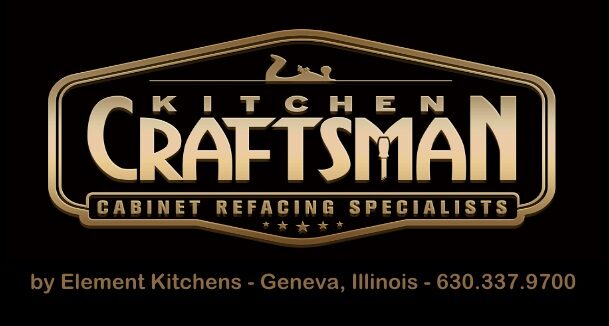Refacing may be your “greenest” remodeling option
This is an article I wrote in January 2008 for K+BB Magazine, the journal of the Kitchen and Bath Business.
Suppose you have a client with whitewashed oak kitchen cabinets circa 1985. She wants to completely transform the kitchen and has her heart set on alder cabinetry in a mitered door style with just a hint of a mocha glaze. Imagine making this happen without adding a single piece of particleboard or plywood to the local landfill. Now imagine doing it without introducing any urea- or formaldehyde-based materials into the home. You might think this is the latest, greatest development in green building, but it’s actually a process that has been around for a while. It’s called cabinet refacing.
I know, the very words conjure up images of plastic laminates and faux wood-grain thermofoil doors. But today’s quality refacing companies offer a selection of woods and finishes to rival any high-end cabinet shop. Our company often uses cherry, alder, lyptus and birdseye maple in refacing projects. Face frames and end panels are covered in 1/4″ thick solid wood stock. Drawers are usually replaced with solid hardwood dovetailed boxes on full-extension slides, and cabinet doors are hung with concealed Euro-style hinges. Details such as crown or undercabinet molding, pilasters and corbels complete the transformation.
Refacing and Indoor Air Quality
By using existing cabinet boxes, rather than discarding them, we avoid adding a few hundred pounds of particleboard or plywood to the waste stream. Probably the most important environmental benefit of cabinet refacing, however, has to do with indoor air quality. The off-gassing of urea-formaldehyde resins found in plywood and particleboard cabinetry is a serious issue in our business. People with chemical sensitivities can experience respiratory problems and nausea in the presence of formaldehyde gas.
According to the Environmental Protection Agency (EPA), as quoted on www.kbbgreen.com, “In homes, the most significant sources of formaldehyde are likely to be pressed-wood products made using adhesives that contain urea-formaldehyde resins. Pressed-wood products made for indoor use include: particleboard (used as sub-flooring and shelving and in cabinetry and furniture); hardwood plywood paneling (used for decorative wall covering and used in cabinets and furniture); and MDF (used for drawer fronts, cabinets and furniture tops).”
The release of formaldehyde tends to occur more rapidly at first but then decreases over time. It’s probably safe to say that 15-year-old cabinet boxes are no longer emitting much, if any, formaldehyde. With this in mind, it doesn’t seem to make much sense to discard the older, inert boxes and replace them with new boxes constructed of fresh, urea-formaldehyde-based adhesive.
While solid wood refacing may make sense on many levels, it isn’t always the best solution. Sometimes the existing cabinet cases or face frames are sagging or coming apart at the joints and therefore should not be reused. Refacing is also impractical if the existing floor plan just isn’t working and a complete reconfiguration is in order. But if the existing boxes and frames are sound and the floor plan is generally good, refacing can be a worthwhile option to explore.
A Combined Approach
Refacing doesn’t have to be an all-or-nothing proposition. Much of our work involves building a custom piece or two to improve the functionality of the kitchen prior to refacing. For example, many of our clients want to get rid of the little built-in desk in the kitchen—you know, the one that’s always buried in 6 in. of junk mail and magazines. We’ll often build a small base unit to replace the desk before we reface.
Many of us in the kitchen and bath industry make our living specifying new products and materials. In addition, I’d venture a guess that most kitchen and bath professionals would prefer to work with a clean slate when designing a kitchen. But if we truly have our clients’ best interests and the environment in mind, any discussion about environmentally responsible kitchen remodeling should include cabinet refacing as an option.
If the ultimate goals of green design and building are to reduce the amount of material that ends up in the waste stream, use products that are made of sustainable materials and avoid introducing harmful chemicals into the indoor environment, then cabinet refacing with solid wood may very well be the latest and greatest development in green building.
—James Pace is the owner of Element Kitchens, Inc. in Geneva, IL. To contact him, email: jim.pace@kitchencraftsman.com or visit www.kitchencraftsman.com.
